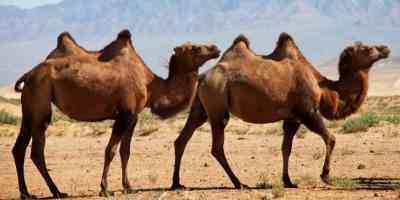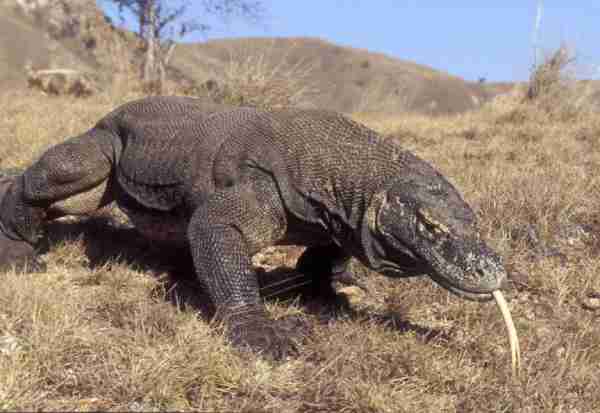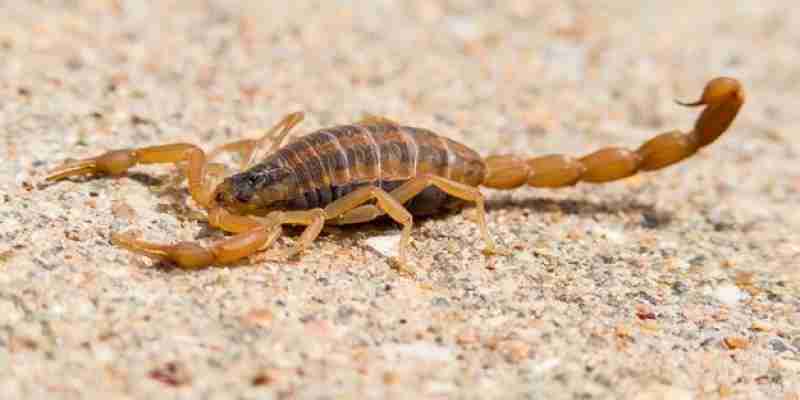In the diverse tapestry of Earth’s fauna, some creatures are masters of thermal adaptation, thriving in the most scorching environments. From scaly reptiles to furry mammals, the ability to withstand and even embrace extreme heat showcases the incredible diversity and resilience of life.
In this captivating exploration, we delve into the intriguing world of the hottest animals, those fascinating species that have evolved remarkable strategies to survive and thrive in the fiery realms they call home. From the sun-baked deserts to the hydrothermal vents deep below the ocean’s surface, these animals have not only adapted to high temperatures but have often turned them into their greatest assets.
Join us on a journey to discover and appreciate the remarkable adaptations and survival tales of these heat-loving inhabitants, highlighting their invaluable roles in their respective ecosystems.
Table of Contents
Exploring Animals Adapted to Extreme Temperatures:
Life on Earth showcases an astonishing spectrum of adaptability, especially when it comes to animals that have mastered the art of survival in extreme temperatures. From the blistering deserts to thermal vents in the deep ocean, a diverse array of fauna has evolved and thrived in these harsh environments. Some have developed specialized anatomical features, such as thick insulating fur or heat-dissipating appendages, to regulate their body temperatures effectively.
Others have altered their behaviors and habitats to cope with the relentless heat, demonstrating remarkable resilience. Through this exploration, we venture into the worlds of these unique creatures, understanding the remarkable strategies they employ to not only endure but often flourish in the face of extreme thermal conditions. These adaptations provide profound insights into the wonders of evolution and the incredible diversity of life on our planet.
Desert Tortoise:

The desert tortoise, native to arid regions of North America, epitomizes survival in extreme heat. This iconic reptile has evolved to endure and thrive in environments with soaring temperatures and limited water resources. To cope with the heat, desert tortoises have developed the ability to store water for extended periods, often burrowing into the cool earth during the hottest parts of the day. Their distinctive, domed shell not only offers protection but also assists in temperature regulation. Despite the challenges, these tortoises play a vital role in desert ecosystems, their adaptations serving as a testament to life’s resilience in arid landscapes.
Camel:

Camels, the “ships of the desert,” are synonymous with heat tolerance and adaptability. Native to the arid regions of Asia and Africa, camels possess unique physiological features allowing them to endure the sweltering desert sun. Their iconic humps store fat, not water, which can be converted into energy and sustenance during long journeys without food or water. Additionally, camels exhibit efficient water conservation mechanisms, reducing water loss through sweat and urination. These remarkable adaptations enable camels to navigate the intense heat and make them invaluable to the livelihoods of those residing in desert regions.
Fennec Fox:

The fennec fox, a diminutive yet charismatic canid, thrives in the extreme heat of North African deserts. Its most distinguishing feature is its oversized ears, a remarkable adaptation that aids in dissipating excess body heat, allowing them to regulate their temperature in the scorching environment. The fennec fox is nocturnal, a behavioral adaptation that enables it to avoid the searing daytime heat, instead hunting and foraging at night. This small fox showcases how even the tiniest of creatures have evolved specialized features to conquer the challenges posed by their hot, arid habitat.
Komodo Dragon:

The Komodo dragon, the world’s largest lizard, is native to the hot, tropical islands of Indonesia. These apex predators possess a formidable presence and are well-adapted to the searing tropical climate. Their dark, rough skin allows them to absorb and retain heat, vital for maintaining their body temperature in a warm environment. While their impressive size and strength make them formidable hunters, they also possess a keen sense of smell, aiding them in locating prey within their challenging habitat. The Komodo dragon stands as a living relic, showcasing the marvels of evolution and adaptation in hot, tropical terrains.
Arabian Oryx:

The Arabian oryx, an elegant antelope native to the Arabian Peninsula, is marvelously adapted to endure the harsh conditions of arid deserts. Their pale coat reflects sunlight, effectively reducing heat absorption, a crucial adaptation for surviving in scorching temperatures. Their remarkable ability to conserve water and endure high temperatures has allowed them to persist in these arid landscapes. Once on the brink of extinction, conservation efforts have seen their numbers increase, highlighting the resilience of this magnificent species in the face of challenging environmental conditions.
Scorpion:

Scorpions, intriguing arachnids with their characteristic pincers and venomous tail, often evoke a sense of “heat” due to their association with arid, desert environments. While not hot in temperature, their sting, often described as a burning or fiery sensation, is indeed an uncomfortable reminder of their presence. Remarkably adaptable, they have evolved to survive in a variety of habitats, including deserts. These arachnids play a crucial role in controlling insect populations, demonstrating their importance despite their fearsome reputation.
Fire Ant:

The fire ant, named for the fiery sensation caused by its sting, is a formidable insect known for its aggressive behavior and painful bite. Native to South America, they have spread to many parts of the world, including warmer climates. Their presence in hot regions is a testament to their resilience and adaptability. These ants build mound-like nests and are known for their collective defense, often attacking in unison when threatened. Despite their diminutive size, they have a significant impact on ecosystems and human activities, making them notable inhabitants of warm environments.
Chili Pepper Clownfish:

The chili pepper clownfish, adorned with vibrant red and orange hues reminiscent of spicy chili peppers, is a dazzling marine species found in warm tropical waters. These fish, known for their symbiotic relationship with sea anemones, exhibit a fascinating adaptation to the warmth of coral reefs. Their striking appearance serves as a visual representation of the colorful and diverse marine life that thrives in the ocean’s sunlit, warm waters. The chili pepper clownfish is a delightful embodiment of the vibrant underwater world associated with tropical climates.
Thermal Vents Tube Worms:

Thermal vents tube worms, residing near hydrothermal vents on the ocean floor, endure extreme heat and pressure in one of the Earth’s most inhospitable environments. These fascinating organisms have evolved to survive in the vicinity of underwater volcanic activity, showcasing life’s ability to adapt to the most extreme conditions. Their presence near hydrothermal vents reveals the mysteries of deep-sea ecosystems and underscores the resilience of life in environments characterized by intense heat and unique geological phenomena.
Extreme Environments: Where the Heat Reigns:
Extreme environments, characterized by scorching temperatures and relentless heat, are fascinating ecosystems that host a distinct array of life. The Earth boasts a range of such environments, from the arid deserts where the sun blazes mercilessly to hydrothermal vents at the ocean’s depths, subject to intense pressure and volcanic activity. In these extreme settings, animals have evolved to adapt and harness the power of heat for survival.
They have developed specialized behaviors, physiological adaptations, and symbiotic relationships to conquer the challenges posed by the relentless heat. These environments also highlight the delicate balance of life, showcasing the remarkable tenacity and adaptability of these creatures. Understanding the intricacies of life in these extreme habitats not only enriches our knowledge of the natural world but also underscores the fragility and resilience of Earth’s ecosystems in the face of environmental extremes.
Final Words:
The exploration of animals adapted to extreme temperatures and the diverse ecosystems where heat reigns provides a glimpse into the astounding variety of life on our planet. From the arid deserts to the hydrothermal vents, these creatures have not only endured but excelled in the harshest of conditions, demonstrating the remarkable adaptability of life through evolution.
As we unravel the mysteries of their survival strategies and witness their resilience, we gain a deeper appreciation for the intricate web of life and the awe-inspiring ways in which nature has sculpted beings to thrive in even the most challenging environments. Let this journey serve as a reminder of the wonders that unfold when life confronts adversity and emerges stronger, leaving us with a sense of wonder and admiration for the diversity and tenacity of life on Earth.
Reference:
- https://www.nationalgeographic.com/animals/invertebrates/facts/tardigrades-water-bears
- https://www.britannica.com/story/8-animals-that-live-in-extreme-environments
- https://cdn.theconversation.com/infographics/105/e3ab8b91f50afedb8ecf0ed8b623bf6f46fc331c/site/index.html

Rahul M Suresh
Visiting the Zoo can be an exciting and educational experience for all involved. As a guide, I have the privilege of helping students and visitors alike to appreciate these animals in their natural habitat as well as introducing them to the various aspects of zoo life. I provide detailed information about the individual animals and their habitats, giving visitors an opportunity to understand each one more fully and appreciate them in a more intimate way.









